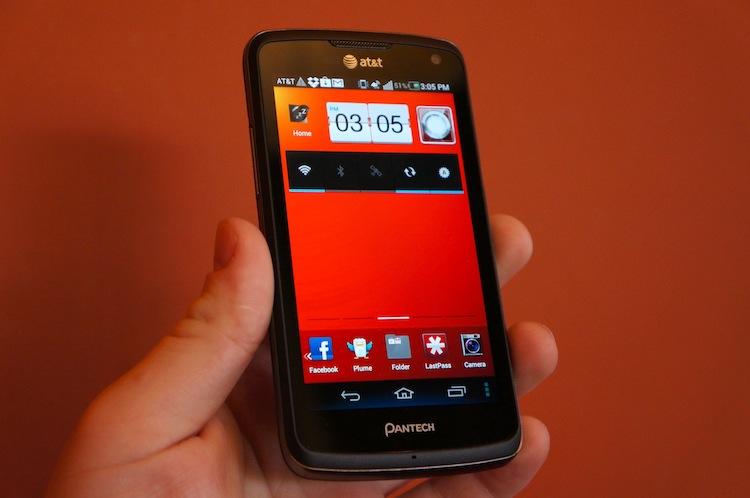
In an unexpected twist, Pantech launched a very high quality device last month, the Pantech Flex on AT&T, and it is undoubtedly one of the more interesting Android handsets to cross our paths here at PhoneDog. Out of all of the Pantech smartphones I can recall, the Flex is the only one with spectacular hardware and design. Not to mention, it hosts some of the same specs under its hood as some of the market's most renowned devices of late, such as the HTC One X or Samsung Galaxy S III.
Best of all, the Pantech Flex is cheap. At only $50 with a two-year agreement, it's definitely a budget device. But it straddles the line between a cheap mid-range phone and a high-end smartphone. Should this be your next (or first ever) smartphone? Or should you lay down a little more money for something more groundbreaking?
I have been using the Pantech Flex for some time now and have made several observations about Pantech's first apparent swing at a higher class smartphone.
When you first pick up the Pantech Flex, it will surprise anyone who is familiar with the level of finish most Pantech products display. It's a tad weighty, which may not suit some people well, but it isn't so heavy it's overbearing or dead weight in the pocket. The weight can be attributed to the metal trim around the edges and the battery door, which is about 60 percent metal.
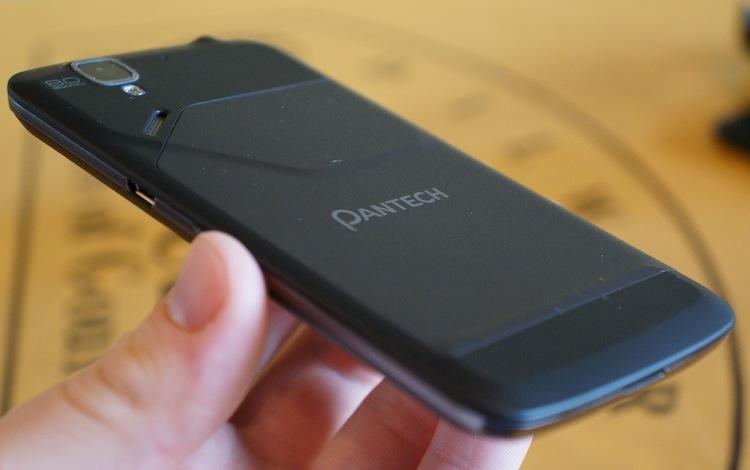
The face of the device is bare. There is a 4.3-inch qHD Super AMOLED Advanced display in the center, a 2-megapixel front-facing camera in the upper right corner and a speaker grill in the center of the top rim. There are no capacitive or physical navigation buttons on this device, they're on-screen. Above the display is your standard AT&T branding and the Pantech brand is displayed at the bottom of the face. On the left edge is a textured volume rocker which is very easy to discover blindly with your finger. The top is home only to the 3.5mm headphone jack, the bottom edge has a slit to help remove the firmly attached battery door. And in the center of the right edge is the textured power button, which rests beneath the micro USB port. On the back, there is an 8-megapixel camera, LED flash and a loud speaker. Beneath the battery door is a 1,830mAh battery, which must be removed to remove the micro SIM or micro SD cards.
The hardware is solid – as solid as any other high-end device. It has a very nice feel, and the rubberized pieces on the back make it very easy to hold on to. There is no squeaking in the hardware, even with a very firm grip. To be frank, the Flex feels more like it was made by Motorola than Pantech. Kudos to Pantech's designers.
My only qualms with the Flex are the placement of its buttons and ports. The micro USB port is only barely out of the way for anyone who wants to use the device while charging. The volume rocker placement is spot on, but the power button constantly forced me to adjust my grip when needing to bump the button to turn the display on again.
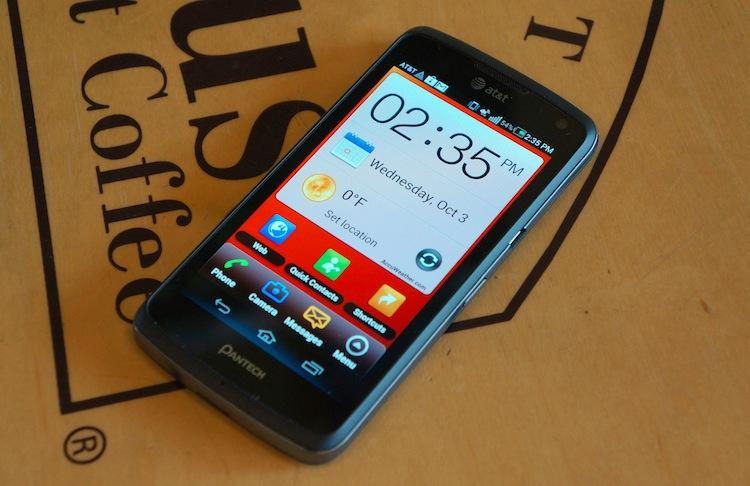
The Pantech Flex ships with Android 4.0 (Ice Cream Sandwich), though its difficult to tell what software it's running for Pantech's deep rooted custom interface. From the lock screen to the notification shade and the Settings app, nearly every aspect of the stock Android interface has been themed and customized by Pantech.
At first glance, it's a bit like Sense 2.0 meets an early TouchWiz build. After several days using it, the verdict isn't all that different. That said, I'm not sure HTC or Samsung would release software that's so conflicting, cluttered and overbearing. The notification shade, for instance, is very cluttered and busy. The orange and teal pull my eyes in different directions and there is so much going on, it's almost incapacitating. To be concise, this interface isn't going to sit well with any power user, or anyone who is used to Sense UI, TouchWiz or even stock Android.
For less experienced users, however, the software does a decent job of simplifying some of the more arduous Android tasks. Long pressing on the home screen still offers the legacy option of adding widgets (in contrast to adding widgets from the app drawer on stock Ice Cream Sandwich), wallpapers and it allows the user to switch themes (similar to Sense UI Scenes).
A somewhat hidden feature of the Flex, though, is amazing for first time smartphone users, particularly those who may be more familiar with a feature phone interface and find it difficult to learn the ropes on your typical Android experience. Under the Change Experience option in the Settings apps, you can switch from the Pantech Standard Experience to Pantech Easy Experience, which rids the interface of multiple home screens, makes the text of several interface elements larger and dramatically simplifies the interface. This is perfect for users looking for a little more horsepower than your typical feature phone but don't want to spend weeks and months getting used to a smartphone.
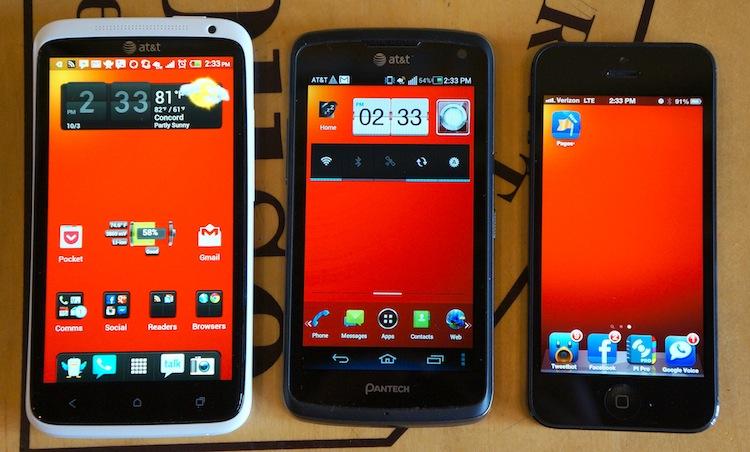
The 4.3-inch qHD display on the Pantech Flex is by no means the best display to be found on a smartphone. Being of Super AMOLED Advanced type, colors are very vivid, often supersaturated, and contrast is very high. At 960 by 540 pixels and a diagonal measurement of 4.3-inches, it only offers roughly 256 pixels per inch, which is a considerably different than the 312ppi of the 4.7-inch 720p S-LCD2 of the HTC One X or 326ppi on the 4-inch (1,136 by 640 pixels) Retina Display on the iPhone 5. Side by side with these devices, a difference in quality and clarity is discernible to the naked eye. Thanks to the PenTile subpixel layout and low pixels per inch rating, you can clearly see checker-boarding in highly saturated colors, especially solid whites. But to an untrained eye, the Flex's display is just fine, especially considering the price of the phone with an agreement.
Under the hood, the Pantech Flex is powered by a 1.5Ghz dual-core Krait processor and Adreno 225, the very same Snapdragon S4 chipset that powers the U.S. variants of the Samsung Galaxy S III and HTC One X on AT&T. As you would expect, the S4 suits the Flex well. While the occasional lag is inevitable, in normal use with the Flex I have yet to experience any notable instances of lag. Even while tweeting, updating 19 apps and downloading The Dark Knight Rises (with a 1.8GB resource file) over LTE, the phone didn't slow down or stutter any.
Playing the game was a different story. While the game ran just fine on the HTC One X, the resource-intensive game stuttered and was plagued by low frame rates on the Flex. There were moments where the game was playable, but, for the most part, it was unplayable. This, of course, could be lack of optimization on the game developer's side, or poor implementation of the chip by Pantech.
Speaking of downloading, the LTE speeds have been phenomenal in Concord, NC, just north of Charlotte. With full bars of LTE service, the Flex managed to pull data noticeably faster than the HTC One X. Using the SpeedTest.net app, the Flex consistently clocked download speeds of 50Mbps or more and the uplink hovered around 20Mbps. The best scores yielded were 60.34Mbps down and 21.33Mbps up, versus the 28.24Mbps down and 22.65Mbps up on the HTC One X just moments later. Downloading the 1.8GB resource file for The Dark Knight Rises only took 12 minutes, however, it greatly impacted the battery.
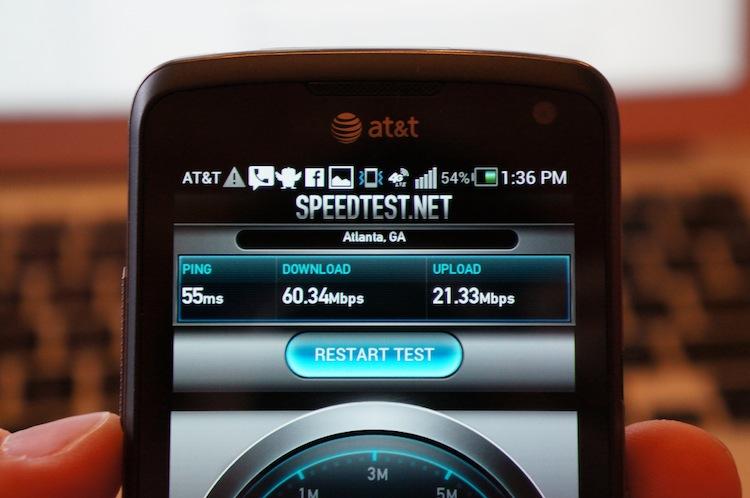
Call quality wasn't necessarily an issue. But the earpiece speaker on the front of the device is a tad on the quiet side. Even turned up all the way, it wasn't easy to hear with moderate background noise. And speakerphone didn't fare much better. Both speakers produced very tinny sounds that led to a slight distortion. As for the microphone, I received no complaints about being able to hear my voice.
In normal use, battery life on the Pantech Flex is okay. It managed to last me all day, though I admittedly wasn't using the device quite as heavily as I typically would. By the end of the day, the phone was begging to be plugged in. Standby, however, is great. I left both the One X and Flex sitting on my desk last night, side by side and both on AT&T LTE. The One X fell from roughly 80 percent to 66 percent while the Pantech Flex dropped from 73 percent to 69 percent between 1:00 AM and 9:00 AM. In extremely strenuous activity, the Flex battery dropped rather quickly. In the 12 minutes it took to download the resource file for The Dark Knight Rises, the battery fell from 70 percent to 54 percent, and the temperature of the device rose to 102° F.
The camera is easily the lowest point of the Flex. On the software side, there are the usual settings in the camera app: exposure, timer, flash, resolution and white balance. There are various shooting modes, too, such as Normal, Self, or Speed (burst mode, which is actually pretty slow). Overall, the settings are quite slim in comparison to other stock Camera apps on other Android smartphones.
Although the back plate on the device boldly touts the 8-megapixels, its quality falls far short of its compatriots with similar resolution sensors. Images turn our milky, under-saturated and lacking lots of detail. Worst of all, it's hard to get the Flex's camera to focus correctly. Out of the several dozen shots I took, I managed to take only one or two in focus. Considering the Flex runs Android 4.0, I was surprised to find how slow the shutter is on the device. The camera is slow to open to begin with, but after letting the camera focus and snapping the on-screen shutter trigger, there is a very noticeable lag before the picture is taken. If your subject is moving, you may miss it by the time the picture is taken or have a very blurry picture.
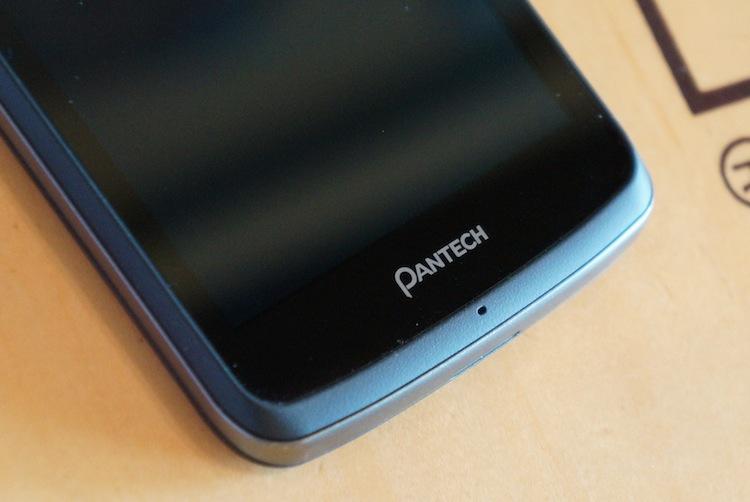
The Pantech Flex is a very surprising device. It's not the best of the best, obviously. But at only $50 with a two-year agreement, it doesn't have to be.
The display is neither as crisp or as dense as those on the HTC One X or Apple iPhone 5, and the camera is rather disappointing. The software clutters the interface, but it also drastically simplifies it, which may appeal to first time buyers who aren't interested in figuring out a complex interface. The Snapdragon S4 chipset and blazing fast LTE speeds also allow those seeking a more budget-friendly device to find one without sacrificing quality or performance.
The Flex is not a smartphone I would suggest to many people. There are much better devices for not much more money on AT&T, like the HTC One X for $100 with an agreement. But it targets a very specific demographic, and it's a fantastic entry from Pantech in the mid-range market, a major step up from a company that generally only makes low-end smartphones.
What's Good: Decent display; moderate battery life; software for feature phone to smartphone converts; great build quality and design; wallet friendly with a snappy processor great LTE speeds.
What's Bad: The software can be overbearing and convoluted; poor camera performance; only 8GB built-in storage.
The Verdict: The Pantech Flex isn't for everyone. It's a phone that straddles the line between mid-range and high-end but targets a specific subset of users who might not care to learn the ropes on a smartphone. For $50 with a two-year agreement, it's a great smartphone. For some, though, it may be beneficial to spend an extra $50 for a much better phone.